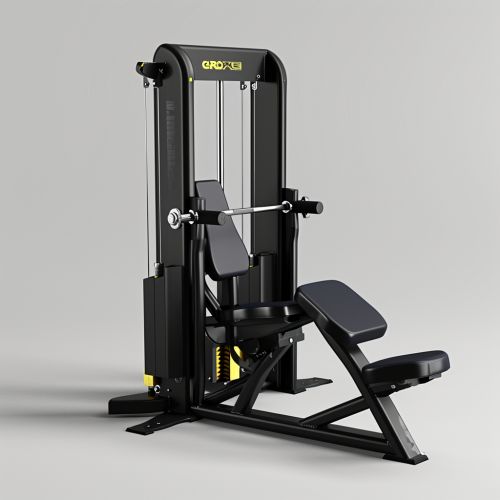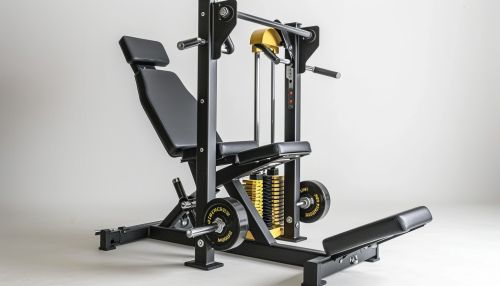Weight machine
Overview
A weight machine is a device used for physical exercise. These machines come in two basic types: plate-loaded and pin-loaded machines. Plate-loaded machines have a physical stack of weights that make up the resistance, while pin-loaded machines use a stack of rectangular weights and a pin to select the resistance.
History
The history of the weight machine is closely tied to the development of bodybuilding and fitness as a whole. In the late 19th and early 20th centuries, the use of weights for exercise and muscle development was primarily the domain of professional strongmen like Eugen Sandow and Arthur Saxon. These men would use free weights, barbells and dumbbells, in their training routines.
The first weight machines were developed in the mid-20th century, with the Universal Gym Equipment company being one of the first to produce such machines. These machines were primarily used in professional gyms and by athletes. Over time, the technology and design of these machines improved, and they became more common in home gyms and fitness centers.
Types of Weight Machines
There are several types of weight machines, each designed to target specific muscle groups. Some of the most common types include:
Leg Press Machine


The leg press machine is designed to work the quadriceps, hamstrings, and glutes. The user sits on a seat and pushes a footplate that is connected to a weight stack. The resistance can be adjusted by moving the pin in the weight stack.
Chest Press Machine
The chest press machine is designed to work the pectoral muscles. The user sits on a seat and pushes two handles that are connected to a weight stack. The resistance can be adjusted by moving the pin in the weight stack.
Lat Pulldown Machine
The lat pulldown machine is designed to work the latissimus dorsi muscles in the back. The user sits on a seat and pulls down a bar that is connected to a weight stack. The resistance can be adjusted by moving the pin in the weight stack.
Benefits of Weight Machines
Weight machines offer several benefits over free weights. They provide a controlled, stable environment for exercise, which can be beneficial for beginners or those with physical limitations. Weight machines also allow for targeted muscle training, as each machine is designed to work specific muscle groups.
In addition, weight machines can provide a safer workout environment. Because the weights are contained within the machine, there is less risk of injury from dropped weights or improper form. This makes weight machines a popular choice in gyms and fitness centers.
Limitations of Weight Machines
While weight machines offer many benefits, they also have some limitations. Because the movements on a weight machine are fixed, they do not engage the stabilizer muscles as much as free weights do. This can lead to an imbalance in muscle development.
In addition, weight machines may not fit all body types or sizes. The fixed positions and ranges of motion may not accommodate those with physical limitations or unique body shapes. This can limit the effectiveness of the workout and potentially lead to injury.
Conclusion
Weight machines are a valuable tool in any fitness regimen. They offer a controlled, safe environment for exercise and allow for targeted muscle training. However, like any exercise equipment, they should be used in conjunction with a balanced fitness program that includes cardio, strength training, and flexibility exercises.
